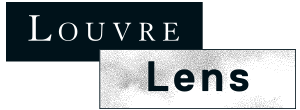Opened in December 2012, the Musée du Louvre-Lens is located in a small town with 30,000 inhabitants in the heart of the Nord-Pas de Calais mining region, which is listed as a UNESCO World Heritage site.
The Galerie du Temps is the heartbeat of the Louvre-Lens. It houses more than 200 masterpieces from the Louvre’s collections, in a spectacular space that covers 3,000 m2 and offers a unique voyage through art history, from the invention of writing in Mesopotamia in the 4th millennium BC to the Industrial Revolution in the mid 19th century. The installation, which is both chronological and multi-disciplinary, creates a new dialogue between eras, techniques and civilizations.
A veritable cultural complex, the Louvre-Lens is the third most popular regional museum in France after the Musée des Confluences in Lyon and the Mucem in Marseille. It has an average of 450,000 visitors each year.
A powerful symbol
On 29 November 2004, the Prime Minister Jean-Pierre Raffarin announced that Lens had been chosen as the site for the new Louvre.
The choice of what used to be the site of the 9th pithead of a coal mine in Lens was a sign of the gratitude of an entire nation for a region that had been devastated several times, by war and by the mining industry.
Proud of its coal mining past and marked by its history, Lens has been fully committed to creating a new future for itself.
Located in the heart of Europe, not far from the United Kingdom, Benelux and Germany, the Louvre-Lens enjoyed the support of the European Union from the outset. Through the Fonds Européen de Développement Régional (FEDER), the 28 countries contributed to 20% of the cost of construction of the Louvre-Lens.
Since the announcement in 2003 by the Ministry of Culture and Communications of the move to decentralise Paris’s major cultural establishments, the State has been constantly involved. In November 2004, the State selected Lens from seven towns and cities as the site for the new Louvre.
In 2004, the Louvre decided to create an outpost outside Paris, with the aim of opening itself up to a new public and a new region. This marked a return to its beginnings: ever since its creation in 1793, the Louvre has always been a museum whose collections and expertise were intended to serve the entire nation.
Although the Louvre-Lens is an autonomous establishment, the link between the two museums is extremely strong, reinforced by a curatorial and cultural agreement.
The Hauts-de-France region was heavily involved in the project from the outset, agreeing to be the client and becoming the leading financer of the project, contributing to 60% of the costs.
The region also organised the international architectural competition, choosing SANAA as the winner.
Since 2016, the new Hauts-de-France region has made it possible to develop projects that involve the whole of Picardy.
Two authorities contributed to the financing of the museum (6% for the Conseil Départemental) and have been extensively involved in the creation and implementation of the museum’s projects.
The creation of a new system of regional government, through the involvement of the two local authorities in the Pôle Métropolitain de l’Artois, is further evidence of their important role in the dynamic instigated by the Louvre project.
Sponsorship has been an important part of the museum’s strategy from the beginning, enabling the Louvre-Lens to forge and maintain strong links with the business community.
Companies are integral to the museum’s activities and have an important role to play in them. Our partners contribute in various ways to the development and impact of the museum, which is an important tool for increasing the attractiveness of the Hauts-de-France region.
In the space of eight years (from 2012 to 2020), more than 100 companies have lent their support to the Louvre-Lens.
Convinced of the transformational potential of this instrument for disseminating culture in the heart of a region that is forging a new future, the Crédit Agricole Nord de France, exceptional founding partner and major sponsor of the exhibitions ‘D’Or et d’Ivoire’ (2015), ‘Le Mystère Le Nain’ (2017) and ‘Soleils Noirs’ (2020), has been committed to the Louvre-Lens project from the very beginning.
